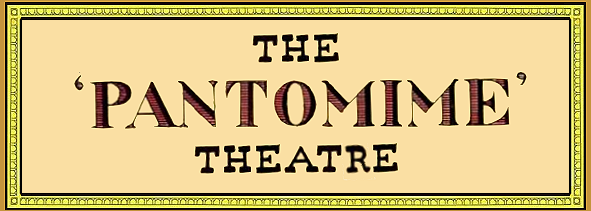
Welcome To The Anatomy of The Theatre
The Proscenium
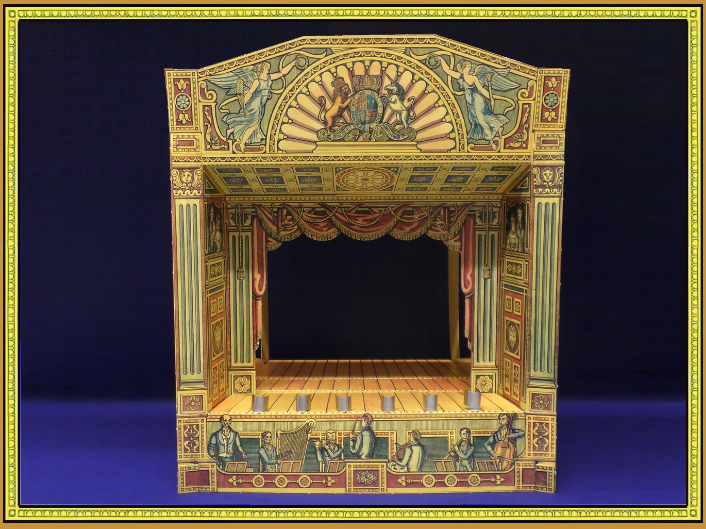
Proscenium, the audience directly faces the playing area which is separated by a portal called the proscenium arch. The Apron, is the area of the stage in front of the proscenium arch, which may be small or, in a thrust stage, large. The Orchestra Pit, an area for musicians to play supporting music seen here in the drop from stage in front of footlights.
The Wings
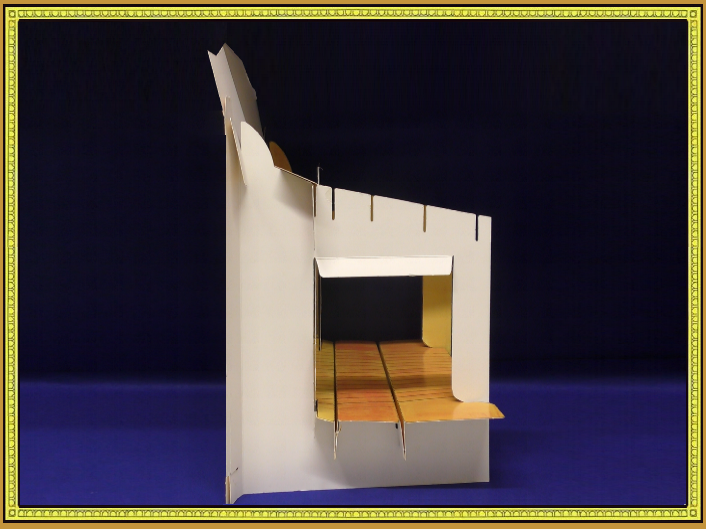
Wings, is the areas that are part of a stage deck but offstage (out of sight of the audience). The wings are typically masked with legs. The wing space is used for performers preparing to enter, storage of sets for scenery changes and as a stagehand work area. In real theatres the wings also contain technical equipment, such as the fly system, the fly system is a system of ropes, counterweights, pulleys, and other such tools designed to allow a technical crew to quickly move set pieces on and off stage quickly by "flying" them in from a large opening above the stage known as a fly tower or fly space for us with toy theatres it is the area above the stage were we slot in the wings, backdrops and curtains.
Backstage
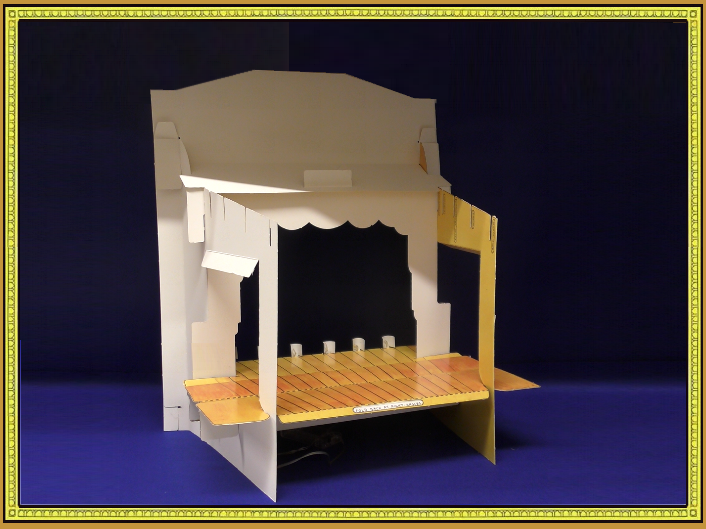
Backstage or offstage view, you will notice the support card side in the wings that hold the scenery, such as the false proscenium, wings also backdrops (backcloth), safety curtain, front curtains and main curtain, which slot into named slots on support card.
Back Stage and Trap Room
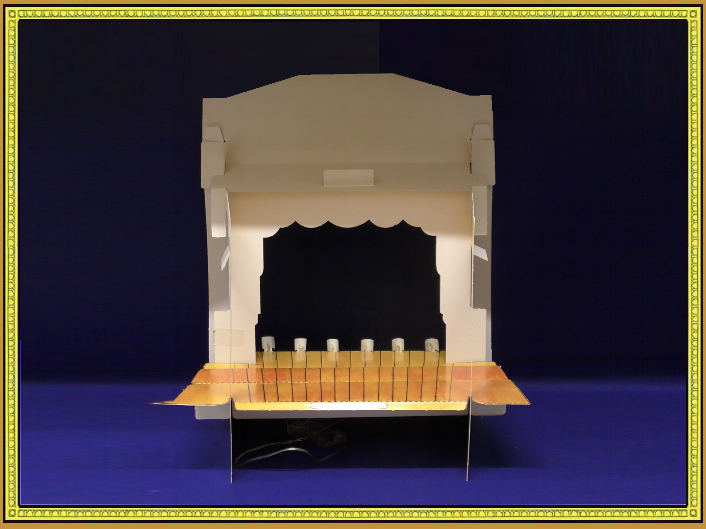
Back Stage - The areas of a theatre that are not part of the house or stage are considered part of backstage, in real theatres these areas include dressing rooms, green rooms, offstage areas (i.e. wings), cross-overs, fly rails or linesets, dimmer rooms, shops and storage areas. This view shows us a good view of our foot lights on the front of the apron of the stage area, you might also see the wire and battery housing for the footlights in the trap room, the trap room is a large open space under the stage of many theatres and even toy theatres.
Named Curtain
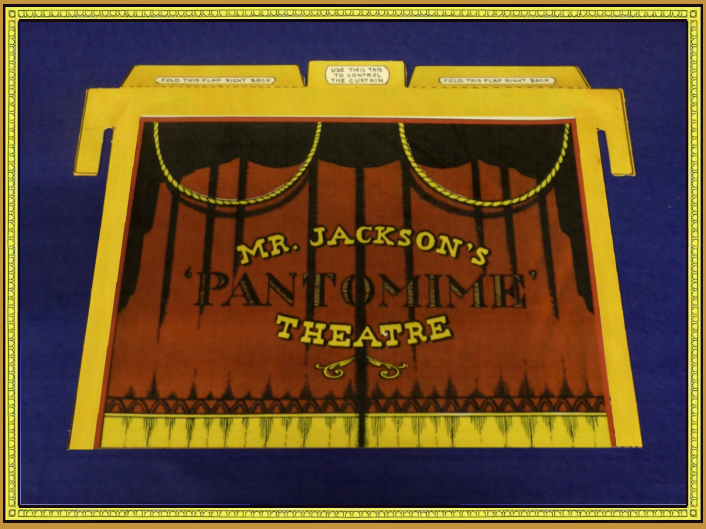
Named Curtain, in this case a Front Curtain with the name of the theatre on.
Actors and Characters
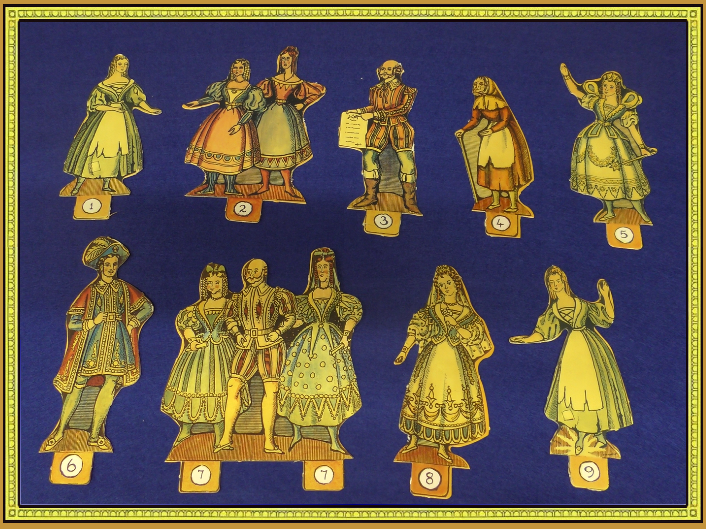
Theatre Actors and Characters, the simplest way to describe this is with the printed card cut-outs which are our characters as seen above, our theatre actors are our puppeteers, so to say, who are providing the movements and voices for the characters while they are on stage. 1 Cinderella in rags. 2 The two ugly sisters Myrtilla and Jemima. 3 Baron Hardup, Cinderella father. 4 The Fairy Godmother disguised as the hungry old lady. 5 The Fairy Godmother revealed. 6 The Prince. 7 Baron Hardup and the two ugly sisters Myrtilla and Jemima. 8 Cinderella transformed into all her glory with a beautiful dress, glass slippers. 9 Cinderella in rags tries on glass slipper, which fits.
Stage Props
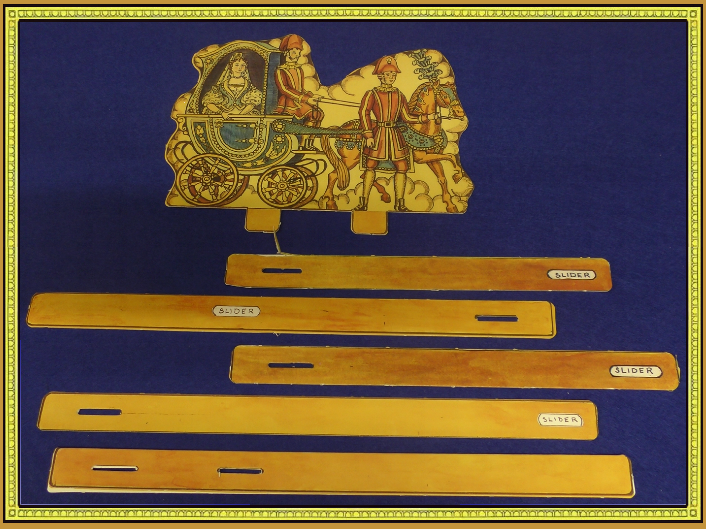
Stage Props, there are many kinds of stage props but only one for us here, where the Fairy Godmother casts her spell to transform Cinderella in all her glory with a beautiful dress, glass slippers and coach. Note on the sliders, which are used to control also place the characters on and off stage. Note one has two slots used for characters number seven and the prop Cinderella's coach.
Backdrops
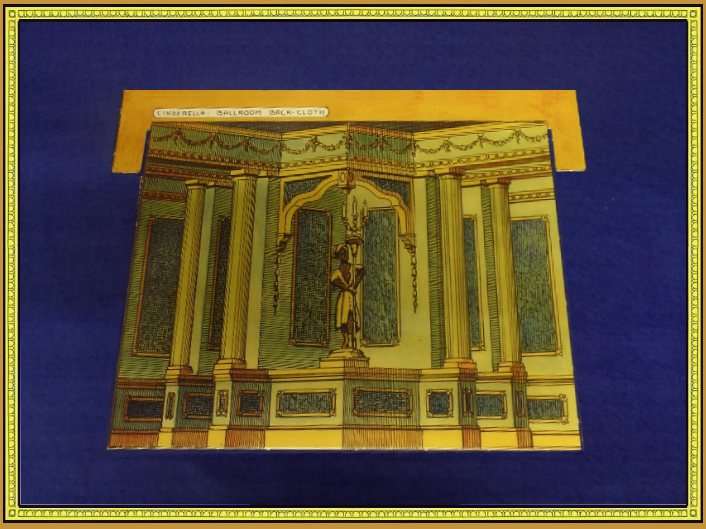
Backdrops (backcloth), often the largest pieces of scenery, backdrops or backcloth is in front of the crossover, in real theatres the crossover is a hallway, room, or catwalk designed to allow actors in a theatre to move from wings on one side of a stage to wings on the other side without being seen by the audience but for us with toy theatres often the backdrops or backcloth is the end of our stage and theatre area.
Wings and Masking Flats
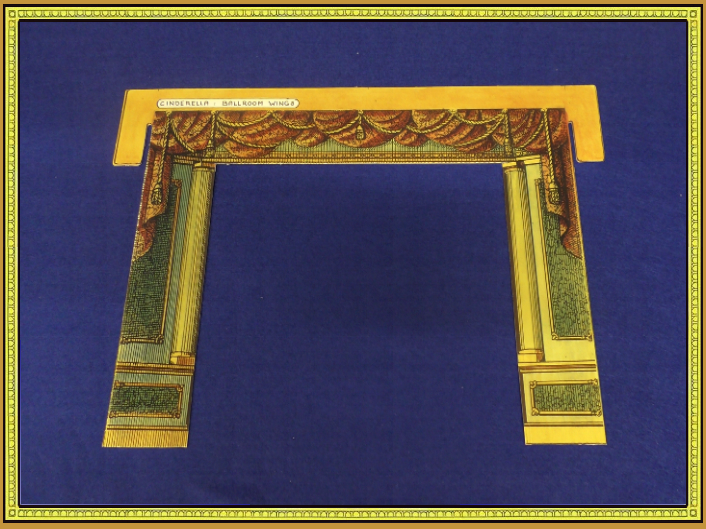
Wings or masking flats, larger pieces of scenery at the side of the stage area which in real theatres have may uses but for us it is where we use our sliders to bring things on and off stage such as props and characters.
Backdrops and Backcloth
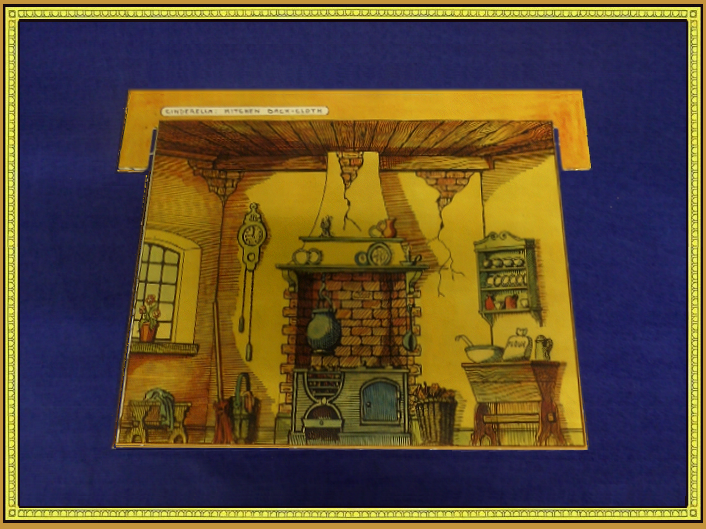
Backdrops (backcloth), often the largest of pieces of scenery, again as in real theatres backdrops or backcloth is in front of the crossover.
Wings and Masking Flats
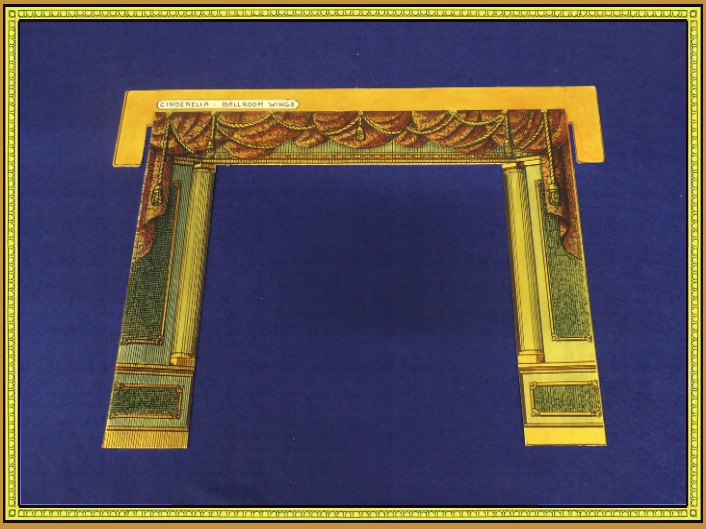
Wings or masking flats, again this is the area to the side of the stage where one works the sliders etc., to control what's on stage. The wings are dropped in from the fly manually on this kind of theatre.
Safety Curtain
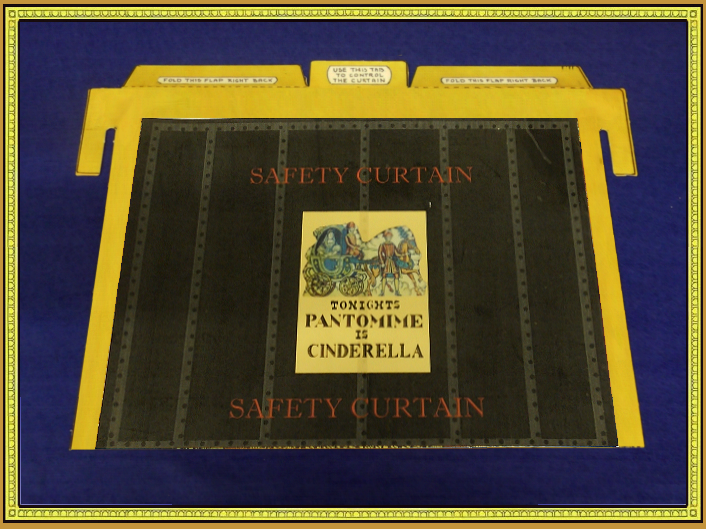
Safety curtain, in a real theatres of today heavy fireproof curtain, in fiberglass, iron or similar material placed immediately behind the proscenium, the obviousness of this is in it's name "safety" not just from a fire aspect but in large productions with heavy scenery it can protect the audience if there is a topple or fall. In toy theatre there is little point to it apart from as here in promoting tonight pantomime.
False Proscenium
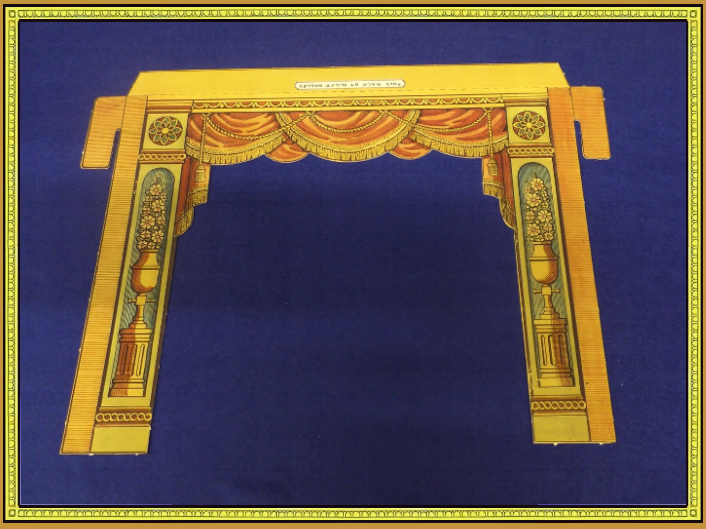
False Proscenium is a frame formed by scenic canvas or vertical flattage within the proscenium arch. Used to reduce the size of the opening when putting a small set onto a large stage.
House Curtain
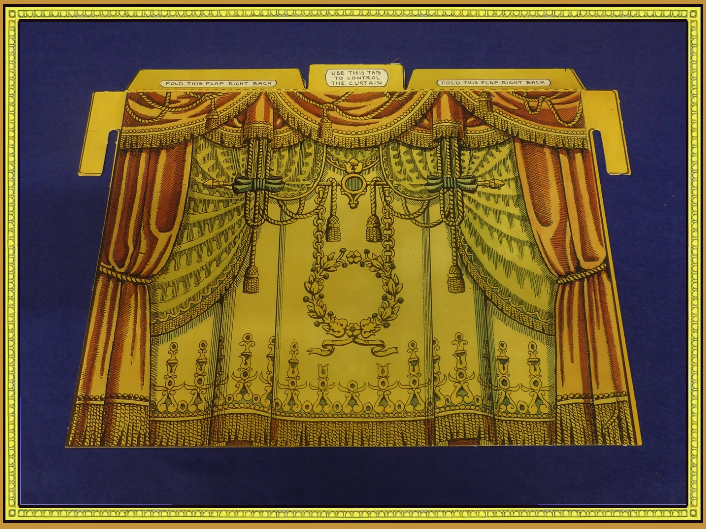
House Curtain also known as Front Curtain, act curtain, grand drape, main curtain or drape, proscenium curtain, or main rag is the stage curtain or curtains at the very front. As with our named curtain and safety curtain our main curtain is a guillotine curtain which is a variation of traveller curtain that is raised and lowered horizontally from fly area above the stage. There are many different types of stage curtains, including the front curtain, masking, cross-stage and backdrop curtains all of which fall under the name of one of these;- Stage Curtains, Austrian Curtain, Front Curtain, Backdrops, Cyclorama, Traveller Curtain, Venetian, Legs, Masking Curtains, Tableau, Mohair Theatre Curtains, Scrim Border, Floor Cloths, Front of House, Gauze, Guillotine and Acoustic Curtains, which are designed to control sound within the theatre.
In Finishing
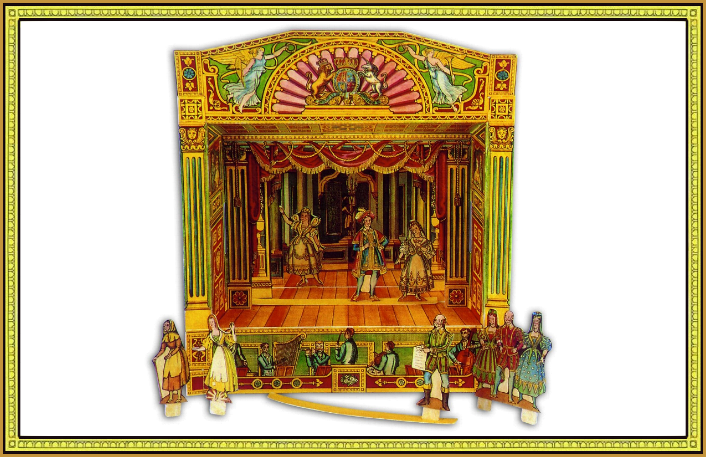
In Finishing, as with real theatres there are many different types of toy theatres, but they all have major parts in common. a stage area for the performance, an audience area those who watch also an off and back stage area where the performance is produced, prepared and implemented from.


|
|